Research Article :
Sakshi, Chetan
Sharma, Shamneesh Sharma, Parminder Singh and Ishtiyaq Ahmad Khan The attendance management of the organization is
an essential activity of their mundane life, has necessitated the need for
revolutionary automatic attendance record-keeping and tracking systems. Paper
surveys the emerging automated tools and applications which are popularly
dominating this activity and fulfilling the requirement of accurate attendance
marking systems. The technological era has gravitated more towards biometric
attendance systems, but there are myriad other technologies that have been
neglected thoroughly. The author identifies, extract, classify, and highlight
all the evolving AMS (Attendance Management System) and have analyzed and
compared their performances precisely and conscientiously. This survey
identifies assorted AMS as biometric, NFC (Near Field Communication), RIFD
(Radio Frequency Identification), Bluetooth, and cloud computing-based
attendance systems. This article not only provides the literature review on the
earlier work, but also provides an analytical report related to cloud-based
AMS, discussions, and future recommendations. Â Right from the manual marking
systems to the automatic biometric marked attendance portals, the attendance
management systems have evolved significantly over the years. Based on the
types of operations and input mode, the attendance systems can be classified as
manual systems and automatic systems. The AMS is playing the most critical role
in the organization to maintain the records of employees, workers, and
educational institutes to keep the record of the students, faculty, and other
staff associates. Attendance is maintained to analyse the presence of the
employee or any person. Earlier, the attendance was maintained manually by
providing their names, unique ID, department, date, time, signature, etc.
making it a very time-consuming and tedious practice for both the employees who
are marking attendance and others who are analysing the presence. In a manual attendance system paper and pens
are used to maintain the records, which lead to the generation of long queues
of the employees for marking it. After that, it calls for a separate team for
its verification, leading to more overhead on the task force of any
organization. Many a time, there have been instances of proxy and mismarked attendance,
which profoundly bothers the reliability of the attendance systems. Attendance
is considered to be an essential factor in evaluating any employee performance,
punctuality, and salary. Thus, it becomes a crucial aspect as the dissemination
of wages and stipends are decided based on the attendance of the
employees. Inaccurate and inefficient manual systems could create a state of
overpaid and underpaid wages, which is an absolute significant concern for any
organization. The manual attendance system has many limitations, such as being
time-consuming, misplacement of records, and computation of salary, bonuses,
rewards, and compensation. Many public and private sectors still follow the
manual attendance system due to lack of resources, unawareness of automatic
tools, uncomfortable with technology, and many. To overcome these problems in
the manual attendance system, organization change their strategies and shift to
automated AMS. Likewise, attendance also correlates with employee performance
and also it provides the relationship between student attendance and their
academic performance. Poor attendance by employees and students leads to
depletion of performance. The automatic attendance system is
followed by many organizations because it solves many problems as automated
systems use electronic tags, fingerprint, face recognition, RF card system,
touch screens, and many more. When employees mark their attendance in the
automatic mode, it automatically stores in some storage device, and managers or
management can see in their system the present/absent list of employees. The
motivation behind this change from a traditional manual system to an automatic
system is since marking electronic attendance aids the maintenance of the
record electronically and abolishes the proxy cycle and thus, keeping the
accuracy intact. Moreover, the traditional manual system has no backup plan if
we lost our attendance register or where the records are maintained. The
automatic system is helping organizations to generate reports regularly in a
very efficient manner to analyse the salary, and they can back up plans for
records. Â Today we are living in the digital
era where every minute the technology is changing concerning the requirement of
growth. In past years manual attendance systems are following by the
organization and in the current scenario organizations changed their approach
towards biometric technology like a fingerprint, face recognition, digital
signature, iris, palm prints, etc. as a biometric expression which remains the
same for any individual throughout the life [1]. Biometric technology uses the
physical data of individuals for authentication, which is a more convenient
method than passwords and RIFD methods. Wide varieties of tools are available
in the market to mark attendance for students or employees, so it becomes
crucial to analyze the best practice out of them. Apart from the biometric
methods, RIFD, Bluetooth, barcode reader, and NFC are the other tools that are
available to mark attendance. Still, these tools are costlier and not reliable.
Barcode technology is mostly used in the shopping centre or other stores to
identify the item and its price [2]. Figure
1 discusses the different evolving technologies used for marking automatic
attendance. Â Figure 1: Types of Biometric Technology [3]. Â Any human physiological or
behavioural characteristic could be biometrics provided it has the following [4]: Â Computerized Attendance System: In 2008,
Nucleus Research Company from Boston, Massachusetts, proposed to use the
computers to maintain attendance. In a manual attendance management system,
there is wastage of paper, the chance of mistakes, difficulty in maintaining
the records, and many more. The proposed method reduces human involvement, cost
but the problem with this system is in data entry. Data entry of the user is
done in a computer by any individual, so the chance of wrong entry may occur
[3]. Jain SK, et al. (2011) [5] proposed the advancement of this computer-based
technology in which application is developed with a list of all registered
students of offered course and professor have an effective solution to the different
problems arises in an automatic attendance management system. Computer-based
attendance management systems solve some limitations of manual systems and use
technology to store the data in a well-structured format. It helps the
department to generate a report in the required format. Software is explored
using the website of the company [6]. Â Bluetooth Based Attendance System: proposed
Bluetooth based attendance management systems that allow the user to take and
maintain attendance through Bluetooth technology [7]. Faculties of offered
courses have to install the application software in their smartphone which
accesses the student's MAC addresses in the presence of the student in the
class. Accesses MAC addresses are stored against the student name and present
is marked for the student in the database. Reports can be generated for the
students by the end of the lecture. The limitation of the proposed system is
firstly every student must carry their smartphone with them, as maybe some
students don't have a smartphone. Secondly, in case if the student is not
present in class and the smartphone is carried by another student still the
present is marked for that student. In this case, the physical presence of the
student is not mandatory only a smartphone is required which is the biggest
drawback of the system. Figure 2
depicts the template of the Bluetooth based attendance management system. Â Figure 2: Bluetooth Based Attendance Management System [7]. NFC Based
Attendance System: NFC is near field communication system (wireless
technology) which can be used to mark the attendance for the students and
employees and its setup time is 0.1s and range is up to 10 cm as shown in Figure 3 [8]. In the current era by the
year 2020, approximately 3.5 billion users are using the smartphone around the
globe. Users with a smartphone are growing very fast so it is very easy to
implement an NFC tag on the smartphone. There are two types of NFC tags one is
active and the other is passive. Those tags which generate its own RF field is
known as active tag and if tag used the power of another device is known as a
passive tag. Tag which starts the communication with other devices is
considered to the initiator of communication, this is possible inactive tags
only and one initiator have many targets (active or passive) for communication.
Active tag initiator can only read the information from the other device. An
initiator can communicate with one target at a time as the broadcasting feature
is not possible in NFC technology. NFC technology is based on RIFD technology.
For example, today credit cards are enabled with NFC tag and in just one smart
tap users can pay their amount at different stores [9]. proposed Bluetooth and
NFC based attendance management system to mark the attendance. NFC is enabled
in the smartphone of the user and the Bluetooth address of the NFC enabled
smartphone is fetched for the user authentication. Further GUI based
applications will receive the tag ID and other relevant information of the user
to mark the attendance. All users must have NFC enabled smartphone which is the
biggest drawback of the proposed system. Â Figure 3: NFC Technology [10]. Fingerprint Based Attendance Management System: The
fingerprint is the very unique feature of humans that can be used for
authentication purposes in many fields for many decades. The accuracy rate in
matching the fingerprint is extremely well. The fingerprint is a pattern
combination of ridges and valleys on a fingertip. No two people have the same
fingerprint even twins also have different fingers print. In finger-based
systems firstly all user multiple fingers print are recorded through the
scanner and stored in the database for future verification. Ramakrishnan J, et
al. (2012) [11] proposed fingerprint based attendance system in which users
fingerprint is recorded in a database and when the user scans their finger in
the scanner it will pre-process the fingerprint and reconstruct the scanned
image. If the scanned fingerprint match with the stored database then it will
send the details of the user to the GUI based application. GUI based
application allows the host to generate reports in the required format. Rao S
et al. (2013) [12] proposed the same technique to mark the attendance but in
their study for verification purposes, they used the extraction of minutiae
technique. Layout of the fingerprint is shown in Figure 4. Numbers of researchers are working on these techniques
and all researchers are facing the following limitation of the fingerprint
system. Â Â Palmprint: Palm print
is similar to the fingerprint as this is also a pattern combination of ridges
and valleys. The major difference between fingerprint and palm print is the
area they cover; the palm area is much larger than the fingertip depicted in Figure 5. The scanner needed to scan
the palm area is much bigger as compared to another scanner so it is heavier
and costlier. The human palm area has more feature than fingertip like it
include principal line and some wrinkles that also have to capture through the
scanner. A high-resolution scanner must be used to scan all the features of the
palm for better accuracy. Bayoumi S, et al. (2015) [14] proposed palm-based
attendance management system that scans the veins of the palm through a camera
or scanner as every individual has a unique pattern. Scanned data is
pre-processed to extract the feature using the PCA algorithm and further match
with the database to mark the attendance. The author achieved a 70% of accuracy
rate with the proposed system and in future, they are working on enhancing the
accuracy rate. Â Â Signature: Signature
is one of the behavioural identification methods of any individual used for
their authentication purpose. A signature is a way of writing an individual
name in a unique style with the help of a writing instrument. In the manual
attendance system signature is the only key factor for any person
authentication. In manual system attendance is maintained in a register or
files having all details of the person like name, department, course, ID etc.
and the only sign is the factor that authenticates all details of the person.
Signature is also used to make sure that whatever information or details
written in any hardcopy are read and verified by the person. Signature is a
biometric method that changes with time as this is dependent upon the person
physical and emotional conditions. There
is no such rule that a person can't change their signature. Limitation of the
signature-based attendance system; there is a chance of forgery by another
person if they know the signature style of another person and other is a change
in signature style over time [16]. proposed the solution to the mentioned
limitation. The author proposed a new style of attendance system in which
students will provide a unique code with the help of the MD5 hashing algorithm
each day to mark their attendance. Figure 6 depicted the sample of
signature. Â Â Voice: Voice or
speech is one of the features to verify any person as every human being has
their voice style. It is a combination of both physical and behavioural combinations
of any person. Today smartphones are coming with voice recognition features
that allow the user to open their phones through their voice pattern. Soewito,
B et al. (2016) [17] proposed attendance management system using fingerprint
and voice recognition. In their experiment fingerprint is taken 20 times for
each student and 100 samples (student have to speak 26 characters of alphabet
randomly) of voice has been taken from 40 students; achieve 95% accuracy rate
with both the methods. Voice is the feature related to human changes with time,
age, medical aspect, emotional state, intensely etc. This feature is not
considered a unique feature of a person when it implements on large scale.
There is a chance of the addition of noise factor while speaking. The Voice
recognition method is only appropriate for telephone and personal communication
authentication. Sample of voice is shown in Figure 7. Â Figure 7: Voice-BasedTechnology [18]. Â Iris Based Attendance
Management System: Iris is one of the best methods of biometric
identification which uses pattern recognition techniques for any individual
authentication as represented in Figure
8. It uses eyes feature or retina scanning using the camera for their
verification and authentication. Iris is the internal organ of the human body
which is well sheltered from any type of damage as compared to fingerprint.
Fingerprint can be damaged due to labour work or change its impression with
age. It is very difficult to prove that iris features are unique as there is no
parameter to prove the same. In the recognition of iris, there is no need for
the person to come in touch with any type of scanner just they have to come in
front of the camera to click the picture. Some person goes under the surgery
but that will not affect in the recognition of iris. It is easy to detect the contact
lenses used by the user. Kadry S, et al. (2010) [1] proposed iris based
attendance management system which scans iris through eyes scanner of
individual, extract minutiae and stored in a database for future matching. When
a user picture is taken from the scanner it will check with the stored
database, if the match is found for clicked iris image it will mark attendance
against them. The author experiment on 300 iris samples and achieve a 98.3% of
accuracy rate on verification. Â Figure 8: IRIS Technology [19]. Â Face Recognition: Face
recognition is the interference-free method of recognition in which face
geometry is used to recognize any human being like eyes, ears, nose, lips and
their relationship with each other shown in Figure 9. The facial feature is used to remember any face in peer
to peer connection and when this is analyzed through some algorithm then all
features are extracted to match with the stored faces in the database. Face
recognition work majorly under two environments one is a constrained
environment and the other is an unconstrained environment. A constraint
environment is that environment in which an image is clicked with user
cooperation like passport photograph on the other side in unconstraint
environment there is no user cooperation in clicking the photographs like
candid images of crowded images. Facial recognition depends upon the condition
in which perception is clicked. Varadharajan
E, et al. (2016) [20]
proposed automatic attendance management system using face detection in which
high definition camera is fixed in the classroom, and it will detect faces and
capture the images of detected faces; all detected faces are further sent for
verification with the database. Matched faces will mark present, and
information about absent students will be sent to their parents through SMS
service. MuthuKalyani K, et al. (2013) [21] proposed attendance management
system using face recognition in which CCTV camera is used to capture the faces
enter in the classroom, and captured images is further matched with the database.
Proposed system helping in two ways one it will mark attendance for detected
faces and the other it will also identify the unauthorized person to the
environment. Â RIFD Based
Attendance Management System: RIFD technology is not related to biometric technology
but it is widely used for the automatic identification of a person. User data
is stored in the electronic device known as RIFD tag and to retrieve the stored
data from the tag RFID readers are used. In this technology students just have
to scan their card in the reader, it automatically fetches all the information
of the student and marks their attendance in the database. Through the GUI
module, one can retrieve all the attendance and make a report as per their
requirement. RIFD technology is costlier than other technologies as it requires
better infrastructure. Lim ST, et al. (2009) [22] proposed RIFD based
attendance system which is used in the schools, colleges and universities to
mark the student's attendance in real-time scenarios. This system can also be
useful to mark the employee's attendance. All students and employees are issued
RIFD tag-based identity cards which everyone has to scan for the reader then
their attendance is marked to the database with their details. The RIFD system
is attached to the computer from where the admin can analyze and reports can be
generated as per the requirement shown in Figure
10. Various biometric technologies are compared on the basis of their
characteristics is represented in Figure
11. Â Figure 10: RIFD Technology [23]. Figure 11: Comparison of Biometric Technology on Characteristics Basis [24]. Â Â Literature Review and Related Work Shoewu O, et al. (2012) [25] proposed the
attendance management system with the help of biometric for the school and
university students. Several researchers are working in this field to overcome
the limitations of the manual attendance system. The manual attendance system
has a limitation of computation like there is a chance of errors and a lot of
time wastage in the compilation of attendance. The proposed system uses the
biometric sensor to record and authenticate the user data stored in the
database. The author compared the results of the manual system and their
proposed system on 80 users and the results show an accuracy rate of 94%
besides this they compare the processing time of the manual attendance system
with the proposed system result in 17.83 seconds for manual attendance system
and 3.79 seconds for biometric attendance system. Nwoye CI (2016) [26] proposed OOADM (Object-Oriented
Analysis and Design Methodology) system which is a fingerprint enabled
cross-platform based automatic attendance system to record and maintain the
attendance for different organizations. In this research matchless feature
(fingerprint) of humans is taken through a fingerprint device and stored in
their internal server to authenticate the fingerprint through an automated system.
According to the author, the traditional
attendance system is a very inefficient method due to the different challenges
in the manual recording of attendance. The proposed work is developing computer
literacy among the user which helps the organization in training the skills
set. Â Mittal Y, et al. (2015) [27] proposed two
application models of fingerprint biometric; one is Access Control System (ACS)
and Classroom Attendance Management System (CAMS). ACS is used for
authentication and assessing the door system used in organizations while on the
other side CAMS is used to mark the class attendance in schools and colleges.
Proposed systems are recording the user fingerprints using the fingerprint
scanner and storing the recorded fingerprints in a database to generate the
different types of reports like day wise, month wise, late coming etc. Author
experiment the systems on 20 students of IIIT Chittoor by punching their
fingerprints in different timeslots and achieved 87% of recognition accuracy
rate for ACS system and 92% of recognition accuracy rate for CAMS. Through
these systems only preregistered users are tested and user which is not
pre-registered they are not recognized by the system result in false
identification. The study is compared with the RIFD technology in terms of
feature and security. In future, they are trying to deploy the system in
real-time in high-security areas so that only authenticate or reliable persons
can access the secure areas. Â Ezema LS, et al.
(2015) [28] proposed the fingerprint-based attendance system to overcome the
limitation or problems with manual attendance systems and impression problems
in RIFD technology. The author proposed the system to use through the
standalone and handheld system without connecting to the computer. User is
registered through their unique fingerprints then recorded fingerprints are
processed to authentication by the system. In future work the author is going
to connect modules through wireless mode so that authorized personnel can
access the attendance remotely along with that they want to connect the system
with GSM service so that admin can receive SMS on each unauthorized access. Â Noor S, et al. (2016) [29] proposed the android based
attendance management system to record the attendance for the students in
school, college and universities. The author compares their study with RIFD and
biometric technology in the context of their hardware and maintenance costs. In
today's era, everyone is carrying a smartphone with many applications installed
in their smartphones, here the author using the smartphone application to
record the attendance of the students. Once the user installed the application
on their device, through this application one can download the student list and
analyze the record of the students. In organization student as well as employee
is provided ID cards as an identity proof so these ID cards are used to mark
the attendance. The device camera is used as a scanner to read the barcode
printed on the ID card and the same recorded attendance is stored in the
database. Â Joshi R, et al. (2015) [30] proposed the
idea of the project to record and maintain the attendance for institutions
using android technology. The study shows that apart from the attendance record
proposed system can be used to access study material, examination schedule,
personal information, student performance, communication to parents etc. The
system allows teachers to take attendance with the help of a smartphone and
allow them to keep a check on every activity of students. The proposed system
as some validation factor by which if any student has attendance mentioned
criteria it will activate the SMS module through which SMS is sent to parent's
number already added in the database. The system allows the teacher to send
bulk messages to students on the number mentioned in the database. Â Hajime (2005) [31] proposed the system for E-learning
and low-cost attendance system. The author worked on majorly three challenges
(Time, Place and Person) which come into their consideration from the past
research, for that they develop a new system using the mobile phone. The study
is taken from Japan where according to the author 67% of the total population
is using the smartphone as of 28 February 2005 and approximately 86% of mobiles
users are using different services like email, digital camera etc. The student
has to take the picture from their camera of faculty teaching in the class,
E-mail that picture to the faculty using the class code which is already shared
with the students before the class and as the class end faculty will receive
the emails from the students with class code from where faculty can maintain
the attendance. If faculty wants to cross-check the student attendance then
faculty can see the image properties like date, time, location etc. This system
is helping to maintain attendance through the existing resources students
carry. Â Abas MA, et al. (2014) [32] proposed AMS system which
maintains and monitor student attendance in classes. According to the author,
faculty faces problems in calling the roll numbers in the class and facing a
lot of problems in the compilation of the attendance. They create a new system
using RFID technology and ASP.net is used for the data analysis of attendance.
Every student in the class is given RIFD enabled cards, when students enter the
class they will touch the RIFD reader with the card provided to them and within
15 seconds they have to enter the class for final authentication. There is one
movement sensor which ensures that student enters the class and they did not
just touch the card, no student is allowed to touch the card twice. When the
class is over the particular faculty read the data through the application and
analyze all the information regarding the students. The proposed system is in
progress to add some more modules to helping the faculties. Â Nguyen KH, et al. (2017) [33] proposed automatic
attendance system for large gatherings like conferences, workshops, symposiums,
seminars etc. to check the ins and outflow of the participants to analyze the
gathering in future events. Each participant who is attending the event is
given a participants card, at the entrance participant have to touch that card
to the RIFD reader which collects the participant information like name, date,
time etc. and is stored in the remote database. The server used by the
organization will collect the data and process the data to display it through
GUI. Shukla S (2013) [34] proposed RFID based attendance management attendance
system for students and staff members of the universities. Users have to scan
their cards through the reader and the system will record the user information
in its database. Software associated with the technology will provide reports
as per the user requirement to analyze the report generated. In the future
author is enhancing the system by using an LCD light screen and IP camera to
indicate the wrong card or wrong person is detected. Â Arulogun OM, et al. (2013) [35] proposed the RFID
technology for attendance management system in which they used the passive tags
or cards. Students are given the passive tags to enter the class and when they
entered the class they have to scan their tags at the entrance to the RIFD
scanner, as the scanner read the tag the information is saved in SQL server
which is attached with the application used to record the data. Through the
application or software, faculty can generate the report accordingly. The
current study is done for Nigerian higher institutions. In the future author
proposed to replace the passive tags with high-frequency active tags for better
performance along with that, they want to incorporate the face recognition
system to add more features and security. Â Rjeib DH, et al. (2018) [36] considered RFID (Wireless
Technology) for this study, which is used to record and identifying student
information. This study applied RFID and web-based application together to
store and extracts the student information like name, class, time table,
grades, address etc. The extracted information is displayed on the screen or
LCD of a particular staff. In the future author proposed to implement this
system with face recognition for staff and students so that no person can use
others cards to mark wrong attendance. Â Agrawal A, et al. (2013) [37] proposed the new
attendance management system using an active RIFD tag and object counter, in
which they installed an RIFD reader in the centre of the class with an object
counter. When all the students enter the class reader will read all the tags
present in the class and if detected tags match with the object counter (used
to detect the number of a person present in the classroom) then all data will save
in the central database which has unique tag ID, name, date, time, classroom id
etc. when all data matches with the required data it will mark attendance for
the students. In the future author proposed to connect the system with a
library, canteen and another department for better performance and to fetch
authenticate details of the students. Â Lodha R, et al. (2015) [38] proposed Bluetooth based
smart attendance system using the electronic chip embedded in students ID
cards. According to the author in RIFD technology students or users have to
scan the card with a reader which takes the almost same time as a manual
system. The proposed technology uses low energy consumption compared to other
RIFD technology. Students are given the electronic chip embedded ID cards which
students have to carry during the class as the electronic tag can be read
during motion and no need for line of sight. When the professor moves in the
class Bluetooth will automatically detect all the tags present in the class and
send information to the database. The database has all information regarding
the students as the tag detected by Bluetooth it will mark present
automatically. Bhalla V, et al. (2013) [7] proposed the automatic attendance
management system using the RIFD and Bluetooth technology. Student matrix card
information is scanned through RIFD technology and stored the information in a
computer database which is further sent to the instructor mobile phone through
Bluetooth. Â Geng S, et al. (2012) [39] proposed the attendance
system for an organization having a large number of departments. Organizations
facing problems with a manual system for calculating the working hours,
overtime and bonuses of employees based on their attendance. Employees are
given smart IC cards to mark their attendance through an RIFD reader which is
installed in every department of the organization. Employee personal
information with unique IC card numbers is stored in the database. When the
card is detected by the reader it will send information to the database in
encrypted form. This study will help the organization to calculate the working
hours, overtime etc. of the employee's inefficient manner. Â Shirodkar M, et al. (2017) [40] proposed the RIFD and
location-based attendance system for employees of the organization. Employees
are provided unique ID smart cards which are scanned through an RIFD scanner. A
unique ID is stored in the staff mobile phones and the same data is also stored
in the organization database. Employees have to install the required APK file
on their mobile phones. When an employee will enter the campus it automatically
connects to the organization internet and immediately records are sent to the
server with an employee ID, date, time and employee location. When office hours
will over an employee leave the campus immediately message is sent to the
server with all details. This system will help organizations to maintain the
attendance record of all employees inefficient manner. Khatun A, et al. (2015) [19]
proposed attendance management system through iris recognition and MATLAB. Iris
is a unique pattern of a human-like biometric, fingerprint, eyes, face etc. In
this study author introduced iris recognition in which the user has to take his
picture through a device webcam and that picture is automatically stored in the
database for localization. The eyes portion of the image is extracted for
authentication purposes through MATLAB. Next time when user clicks their
picture that will match with the stored database and an E-mail is sent
regarding their attendance to the concerned department. The author achieved
82.2% accuracy from the proposed system. Â Shirodkar M, et al. (2015) [41] proposed attendance
management system using the face recognition method in which captured faces are
matched with the face database of the students and mark attendance accordingly.
Student images are captured in different poses during the admission process and
stored in the college database. Cameras are already installed in the system
which captures the only frontal image of the student and matches captured image
with the database if the image matches then the system automatically mark the
present for that particular student. Reports can be downloaded by the
authorities at any time from the front end. The author achieved an accuracy of
83.2% from the proposed system. Jayant KN, et al. (2016) [42] proposed
attendance management system using hybrid face recognition techniques. In this
study author installed high definition camera above the whiteboard of the class
which capture all students three times in the whole duration of the class
because of variations in the pose of the students. Viola-Jones algorithm is
considered by the author for face detection in their study due to the fast feature
selection procedure. The system will capture and process data in three frames
and the frame gives the highest detection rate that frame will be considered by
the system to mark the attendance in excel format. Â COVID-19 and Cloud-Based Attendance Tracking System Introduction
to Cloud: In the current decade, the Internet becomes the
most powerful and essential service to users. People are using several services
through the Internet to solve their many problems, basically today Internet has
the power to solve user's problems. Cloud service is one of the services which
people are using to make their work easier and secure. Cloud is the type of
server where software and databases are running to store and process the data;
which can be accessed through Internet services. Data centres are the place
where all cloud servers are stored and all data centres are placed in different
locations of the world. Cloud computing will allow the user to access their
data from anywhere and any device like a smartphone, PC, laptop, tablet etc. In
cloud computing, user or organization don't have to run any type of software in
their local machine or servers [43]. Let's understand the concept through example;
If any person has a smartphone with a lot of social media application installed
and due to any damage or theft person buy a new phone and installed all
application again like Facebook, Instagram, WhatsApp; as they log in to any
social media account using their username and password all data associated with
their account is automatically retrieve from the cloud. Another best example is
Gmail account and Google drive where any person can store their data and from
anywhere any time they can access their data without failure. These all things
happen with the help of cloud computing. Before the cloud, computing
organization has to invest money to buy servers and maintaining the servers but
after the evolution of the cloud, computing organizations don't have to invest
in updating and maintain their servers. Every organization or person is not
able to afford the large infrastructure to maintain IT services for that cloud
is the best solution; they just have to buy cloud services and use the existing
infrastructure or services [44,45]. How Does
Cloud Computing Work? : Cloud computing is working on the concept of
virtualization in which people can feel that as they are working on a physical
device with their hardware. Technically this is known as a virtual machine.
Virtual machines are machines that behave like a physical machine to any
person. Virtual machine helping organization or person to access many servers
at a time from many data centres and in case any cloud server getting down than
cloud vendors provides backup servers to access the data and services. Users
can access cloud services through browsers or applications. Architecture if
cloud computing is shown in Figure 12.
Cloud provides the following service models to store and access the data. There are three types of cloud is provided by
the different vendors of the cloud services. ·           Â
Public cloud (open to all users and
organizations) ·           Â
Private cloud (dedicated to a single
organization or user) ·           Â
Hybrid cloud (combination of both public and
private) Figure12: Cloud Computing [46]. Â Application-based
Attendance Management System on Cloud Technology Kaizala:
Kaizala (www.web.kaiza.lap) is
founded in 2017 and developed by Microsoft (United States) based company.
Kaizala is working on secure messaging among large groups and work management
applications. The application allows users to send and receive messaging, task
assignments among groups and submit invoices. The application is also providing
the feature to mark attendance with photographs and the exact GPS location of
the user. After marking the attendance admin or authorities can download or
analyze the attendance of each user in the form of sheets, graphs and reports.
Kaizala is using by both private and public sector organizations; Andhra
Pradesh (India) is the first public sector that is using the application to
mark attendance for their more than 30 departments. In the private sector YES
bank, Apollo telemedicine etc. are using this application to manage the
attendance of their employees. Version:
Application is coming with two version one is which is free with fewer features
and other is paid version which come with all professional features.
Application is available with both android and ios platforms which further can
be explored from the link [47]. Applications features has been shown in Figure 13. Â Figure 13: Kaizala Features [47]. Â Zoho People:
Zoho people
(www.zoho.com) is founded in 1996 and developed
by a United States-based company. Zoho people is a cloud-based attendance
system used in organizations to maintain the attendance of employees. This
system helping in smoothing the HR process through their web portal. The system
is helping the HR department to maintain the salary record, leave record,
timetable, documentation, payroll, recruitment, resume management etc. for
their employees. In this employees can mark their attendance through a web
portal or Zoho application and the application will fetch the exact location
and time of the marking attendance. Hr department is getting the exact check-in
and checkout time with the location of every employee; further, they can download
the report on a daily, weekly or monthly basis as per their requirement. Version: The
application is coming with two versions one is the trial basis which is free
and the other is paid version which comes with all professional features.
Application is available with both android and ios platforms. Features: The
application is providing the customization features to the admin so that they
can easily define the modules and processes through the application dashboard
to analyze the report and documentation which can be explored from their link
[48] and application feature is shown in Figure
14. Â Figure 14: Zoho People Application Features [49]. Â Isolved Time:
iSolved Time
(www.isolvedhcm.com) is founded in 1992 and developed
by a United States-based company. iSolved Time is a cloud-based attendance
system used in organizations to maintain the attendance of employees. This
application is providing the solution to the medium based organization where
they have approximately 50+ employees on average. This application replaces the
manual punch system with an employee time tracking system. They are using SaaS
technology to manage employee attendance and time of work in the organization. Version: The
application is coming with two versions one is the trial basis which is free
and the other is paid version which comes with all professional features.
Application is available with both android and ios platforms [50]. Applications
features has been shown in Figure 15. Figure 15: iSolved Features [50]. Â Clock It: Clockit (www.clockit.io) is founded in 2009 and developed
by a United States-based company. The clock is a cloud-based attendance system
used in organizations to maintain the attendance of employees. This application
is best suited for small and medium business platforms. Clocks help
organizations to mark attendance with GPS location and cloud-based timing of
the employees. It also helps employee as well as organizations to access the
dashboard and allow to maintain their leaves, yearly calendar of holidays, GPS
tracking and many more. Version: The
application is coming with two versions one is the trial basis which is free
and the other is paid version which comes with all professional features.
Application is available with both android and ios platforms [51]. Applications
features has been shown in Figure 16. Â Figure 16: Clock it Features [48]. Â Attendance
Bot: Attendance
bot (www.anaek.com) is founded in 2016 and developed
by a United States-based company. Attendance bot is a cloud-based attendance
system used in organizations to maintain the attendance of employees. This
application is best for businesses that use collaboration platforms for
communication purposes. Organizations can use this application to maintain
employee attendance, leave applications and time tracking. Through this
application, organizations can generate the bill of their client based on the
number of hours spent on the project. Employees can apply for leave; remote
working or they wish to work from home, all types of leave with their previous
record can be maintained by the system. Version:
The application is coming with two versions one is the trial basis which is
free and the other is paid version which comes with all professional features.
Application is available with both android and ios platforms [52]. Applications
features has been shown in Figure 17. Â Figure 17: Attendance Bot Features [48]. Â Webwork Time
Tracker: Webwork (www.webwork-tracker.com) is founded in 2015 and developed
by Armenia based company. Webwork time tracker is a cloud-based application for
time tracking and employee monitoring software for the employees. This is best
suited for remote teams of any size. The application provides a platform to
calculate the working hours, time spent on the task assigned etc. in the form
of screenshots, graphs and online reports in the employee dashboard. Employees
can share their task performance with their clients for whom they are working
and with their department head. The application will take random screenshots of
employee work and all the reports related to work will be downloaded in visual
form. This application helping the organization in increasing the productivity
of the employees as this also generates the working time and non-working time
report of each employee. Version: The
application is coming with two versions one is the trial basis which is free
and the other is paid version which comes with all professional features.
Application is available with both android and ios platforms [53]. Applications
features has been shown in Figure 18. Â Figure 18: Webwork Time Tracker Features [48]. Jibble: Jibble (www.jibble.io) is founded in 2016 and developed by Malaysia based
company. Jibble is used to mark attendance for the employees and they are
providing applications free of cost. Organizations can track their employees at
work for their payroll, attendance etc. Application is providing a helping hand
to the organization to track their employee's check-in and checkout time with
their GPS location. The system is allowing the official to generate timesheets
and reports as per their requirement [54]. Applications features has been shown
in Figure 19. Â Figure 19: Jibble features [48]. Â Calamari: Calamari (www.calamari.io) is founded in 2014 and developed
by Poland based company. Calamari is using cloud-based technology to mark
attendance for the employees. Application is best suited for small and medium
type business organizations looking for solutions for remote work and absence
tracking. Calamari is providing a solution to managing the people in a very
efficient manner and all users can plan as well as track all types of leaves.
Application is helping organizations to analyze the attendance of the employees
with role-based security features. Version: The
application is coming with two versions one is a trial basis which is free and
the other is paid version which comes with all professional features.
Application is available with both android and ios platforms [55]. Applications
features has been shown in Figure 20. Â Figure 20: Calamari Features [48]. Â Â This paper investigates the diverse systems for
recording and maintaining attendance electronically and in a computerized way.
Apart from the scrutinized study of the emerging technologies for AMS like
Biometric-based AMS, Bluetooth based AMS, RIFD, and NFC based AMS, the authors
have identified distinct applications under cloud-based AMS. These applications
have been elliptically outlined and articulated. Though there are 200 and more
applications under this head, the authors have endeavoured to identify and
highlight a few of the recommended AMS applications based upon their ease of
usage and availability. The highlight of this review study is the fact that it
picks out all the dominating technologies and brings to the limelight the
entire growing pool of technologies for AMS. From this review, we concluded
that this shift from manual to automatic has a lot of dimensions to grow, and
more technologies and applications need to be explored and implemented. Being
dependent on a few of them is still diminishing the progress of the
organizations, and the authors recommend the need and direct well to all other
reliable and implementable solutions to attendance management and
record-keeping. Our future scope includes a more in-depth insight on other
cloud-based applications and works on hybrid tools and technologies to bring
out better and more enhanced application solutions in this challenging domain. Â Â Advanced Attendance Management Systems: Technologies and Applications
Abstract
Full-Text
Introduction
Automatic
Attendance Management System
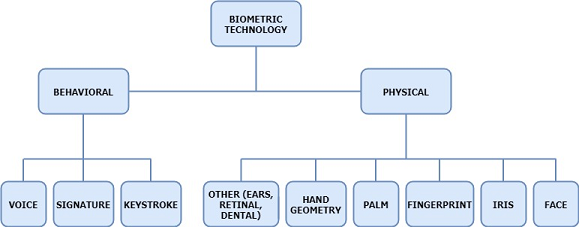
Biometric
Characteristics
Assessment of Different Attendance
Management Systems
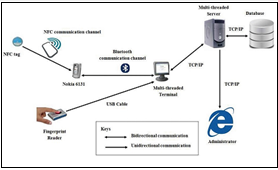

 Â Â Â Â
    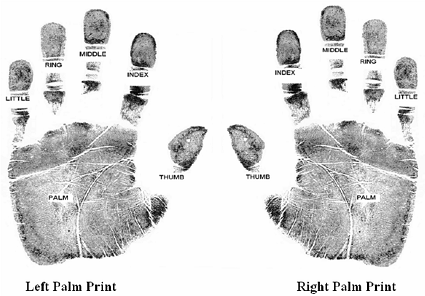

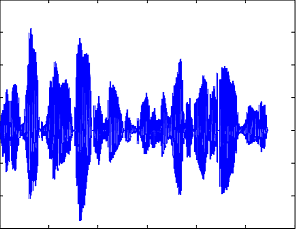




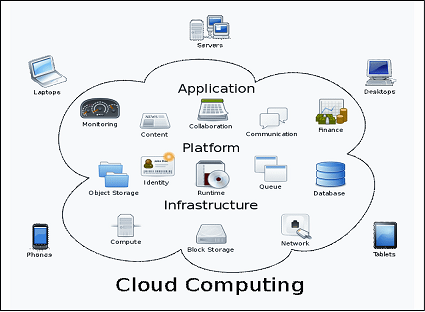

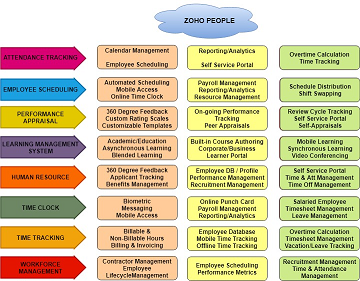
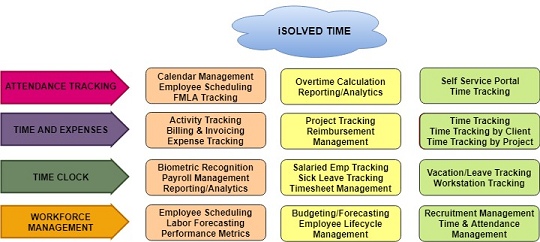
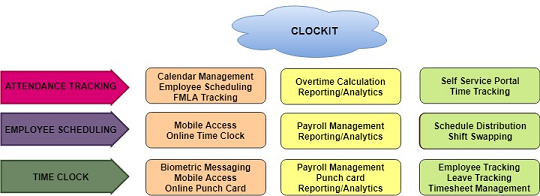

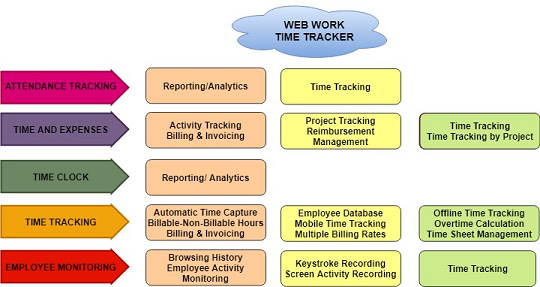


Conclusion and Future Recommendations
References
Corresponding author
Chetan
Sharma, Chitkara
University, Himachal Pradesh, India, E-mail: chetan.sharma@chitkarauniversity.edu.in
Attendance,
AMS, RIFD, NFC, Bluetooth-based attendance, Biometric, Cloud-based attendance
applications.